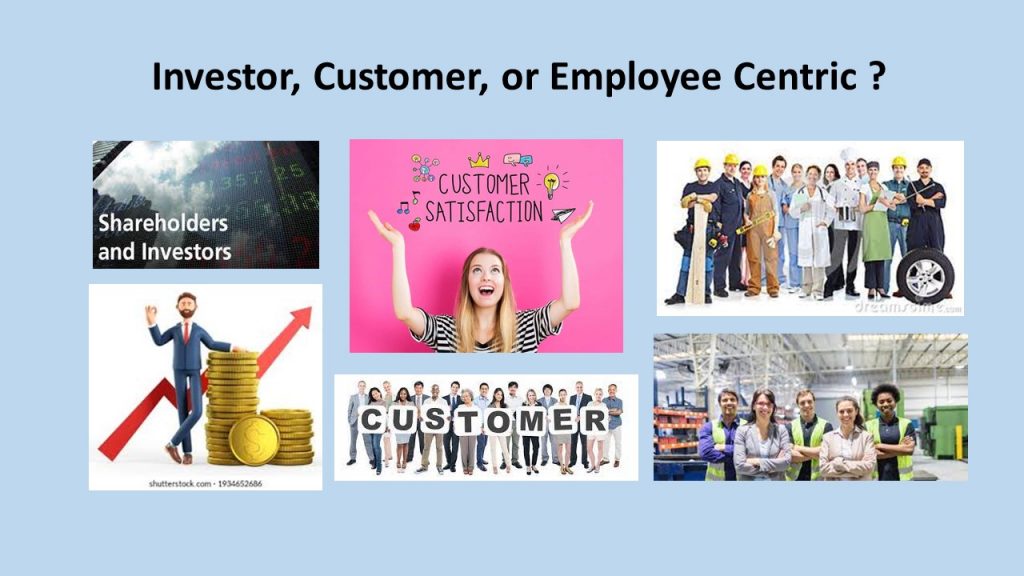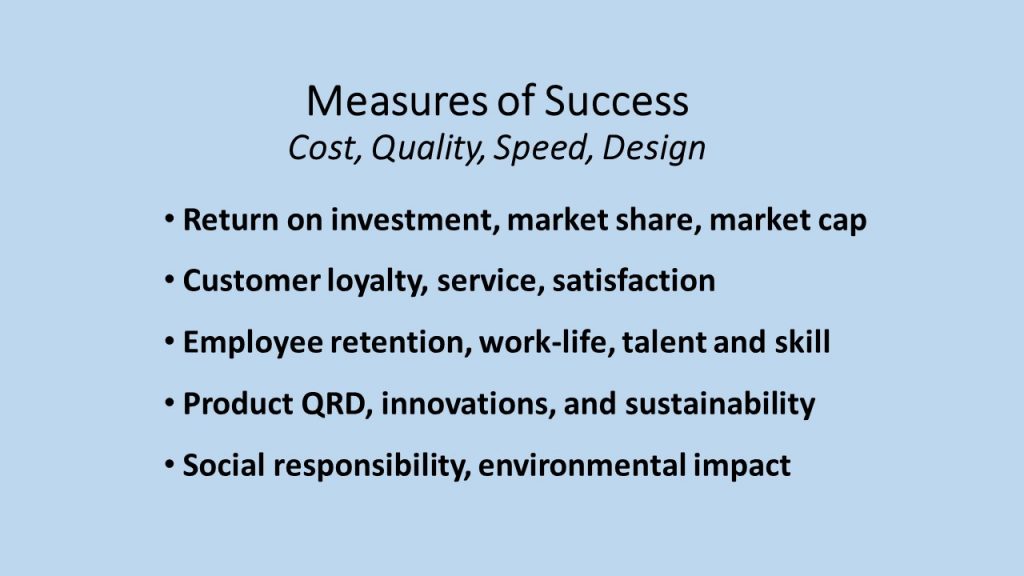
128. Shifting Focus in Business | 不停移轉的企業焦點
– Musings of Dr. Jamie C. Hsu, 11.20.2021
The pandemic and the subsequent labor shortage and supply chain disruption have exposed the problems in the business world: should it focus on investors, customers, or employees? The different focus has resulted in different successes and problems.
In the good old days, most large companies and businesses would focus on revenue and profit generation. They wanted to appease the investors and shareholders because they controlled the votes for electing senior managers and their compensations. This investor-centric approach, when carried too far, resulted in ruthless cost-cutting, poor product quality, and employee strikes and revolts. The auto industry in the 1970s was an example of such excessive focus on cost and profits, resulting in numerous union strikes and product recalls. The mentality of some dominating companies at that time was “we build it, and they will buy it.”
As the global competition intensified, consumers began to have a lot more choices and power. That triggered the customer-centric movement. Many new initiatives began to pop up. Users’ focus groups, market research, Six Sigma quality control, and innovative designs became popular ways of attracting and retaining customers. Companies began to understand that customer relations, service enhancement, product performance, and speed of delivery were more critical than lower costs to generate long-term revenue streams. Thus we saw online companies fine-tuning the order and delivery system, trying hard to get merchandise into customers’ hands fast, even if there was no reason for such a rush.
In order to reduce cost, speed up delivery, and improve quality, companies started to use more automation, AI scheduling, and employee tracking. More and more workers felt the dehumanized work conditions and rebelled by asking for higher pay, more flexible hours, and better benefits packages. The current labor shortages are forcing businesses to become employee-centric.
The pendulum of business focus has been swinging between investors, customers, and employees. The winning business will be the one that has a balanced approach and does not overemphasize one stakeholder over the others.


不停移轉的企業焦點 (2021/11/20)
-作者 許俊宸博士
-中譯 薛乃綺
疫情以及隨之而來的勞動力短缺、供應鏈中斷,暴露了全球商業的問題:應該要關注投資者, 客戶, 還是員工?從不同面向切入,會有不同的成就與问題。
在過去的好日子裡,大多數的大公司與企業都專注在創造營收與利潤,以安撫投資者及股東。因為这些人控制著高階管理層級的選票及薪酬。這種以投資者為中心的方法,如果走得太极端,將會導致更殘酷的成本削減、低品質產品以及引起員工罷工和抗爭。1970年代的車輛產業就是一個例子。就是這樣過度關注成本與利潤,導致了無數工會罷工以及產品出问题的召回。當時一些主導企業的心態就是:”這是我們做的,他們自然會買單”。
隨著全球競爭加劇,消費者開始有了更多的選擇及權力。這引發了以客戶為中心的運動。許多新的措施開始出現。消費者焦點群組、市場研究、6-sigma品質控制及創新設計,成為吸引和留住客戶的流行方法。公司開始明白客戶關係、強化服務、產品性能和交付速度比降低成本更重要,才能產生長期的收入來源。因此,我們看到線上公司发展并維持良好的步調在訂單和運送系統,並且努力地將商品快速送到顧客手上,即時顧客沒理由要這麼急着到手。
為了降低成本、加快運送速度、提高質量,企業開始使用更多的自動化、人工智能排程和員工追蹤系統。越來越多工人感受到非人性化的工作條件,並且為了要求更高工資、更靈活的工作時間、以及更好的福利待遇,而進行抗爭。而且引起當前的勞動力短缺,迫使企業變得‘以員工為中心’才能找到和留住好的人才。
企業的業務重點一直在投資者、客戶與員工之間搖擺。獲勝的企業將是那些懂得採用折衷平衡方式,而不是過分強調單一利害關係者的利益,这才会成为长期成功的企業。


